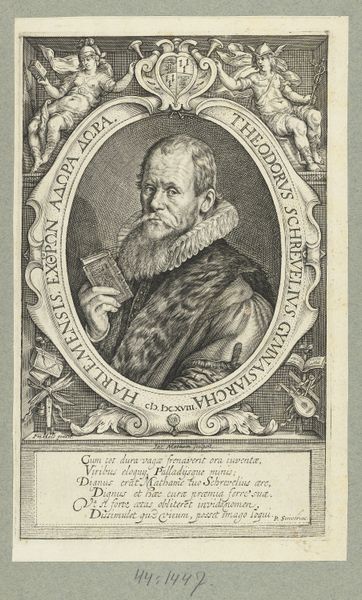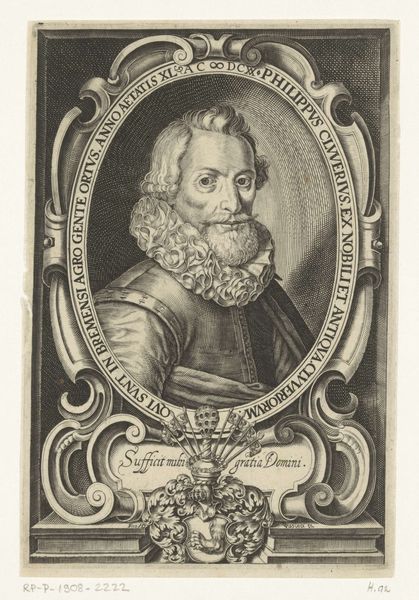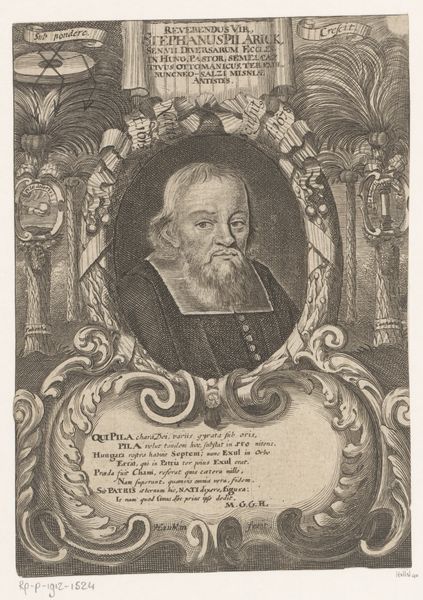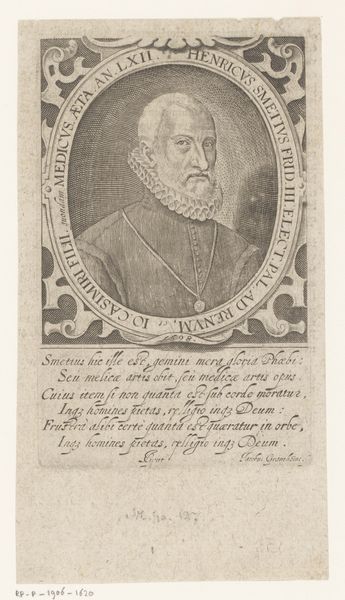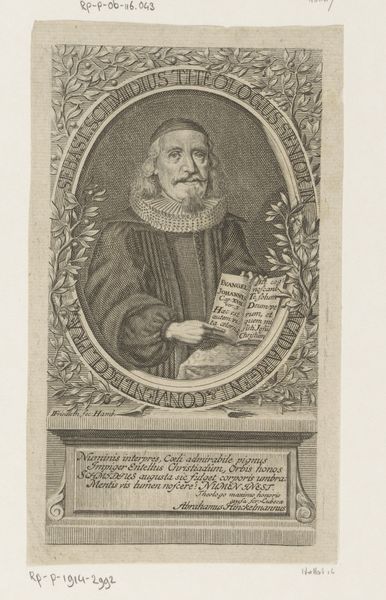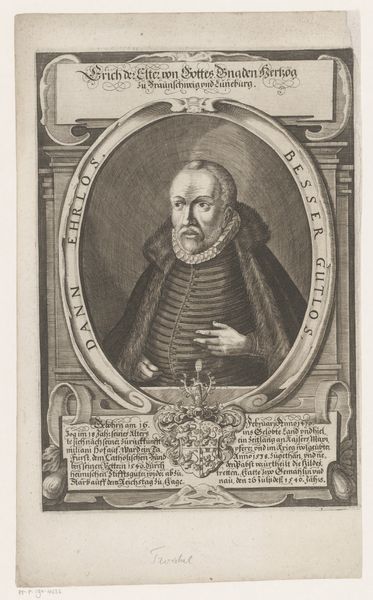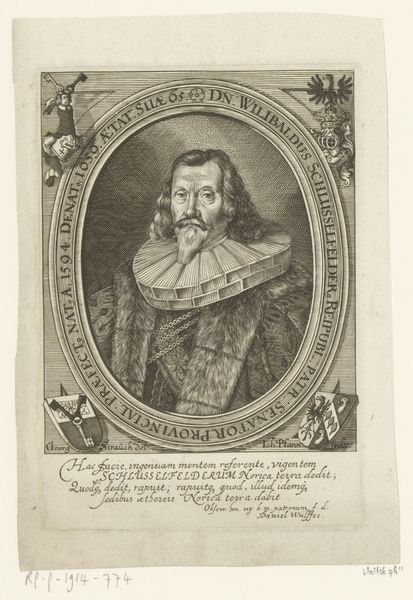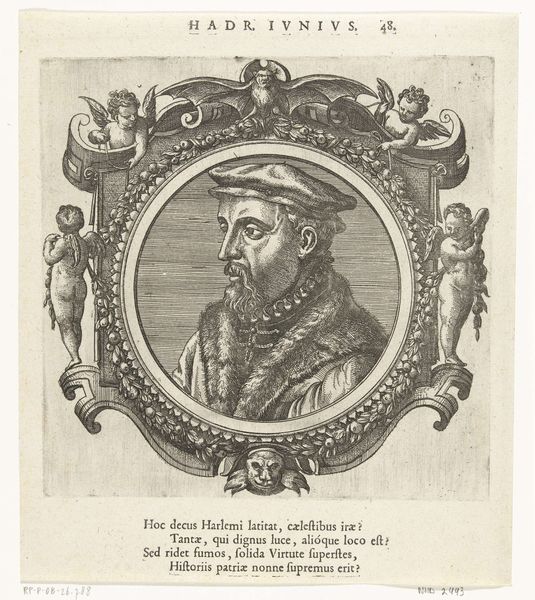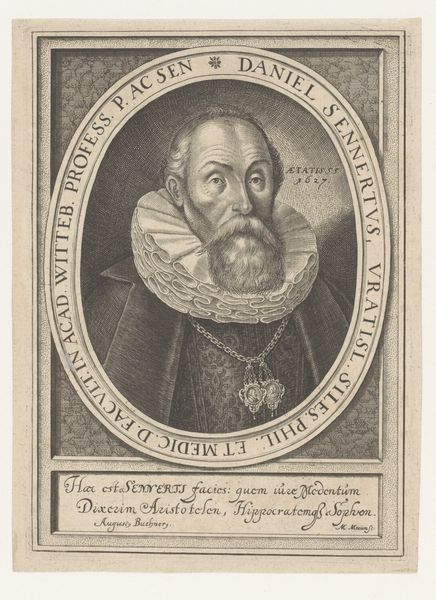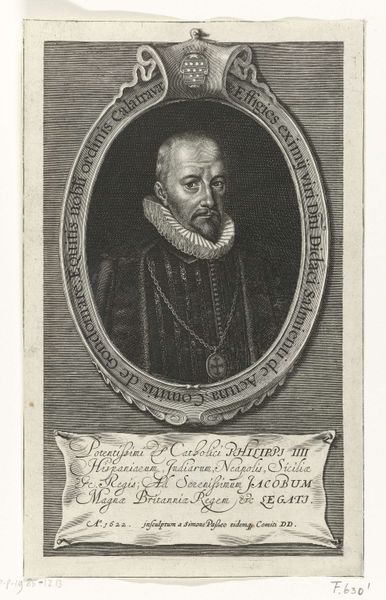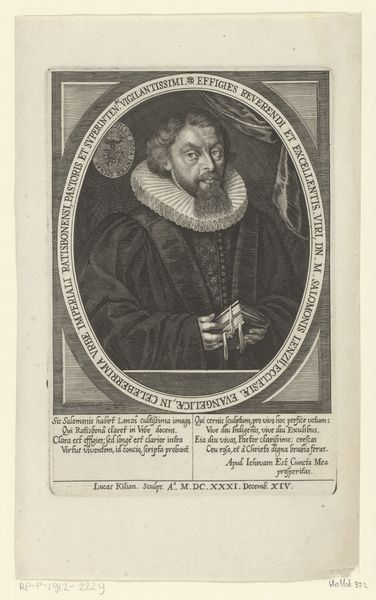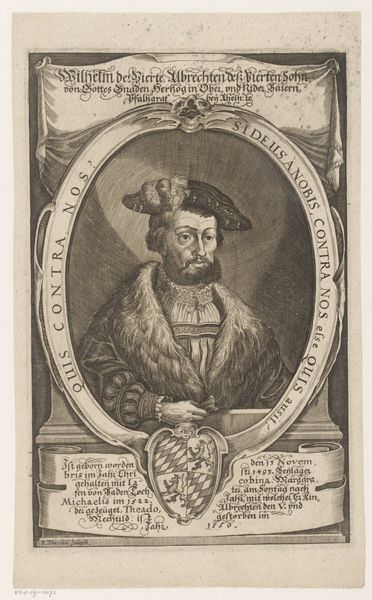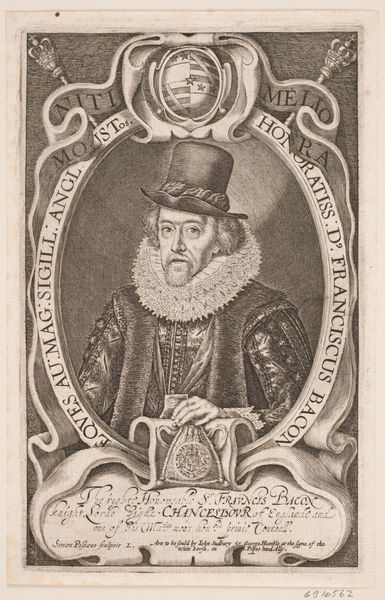
print, etching, engraving
#
portrait
#
baroque
# print
#
etching
#
old engraving style
#
engraving
Dimensions: height 163 mm, width 122 mm
Copyright: Rijks Museum: Open Domain
Editor: This is a portrait of Michael Walther, an etching made after 1630 by Peter Troschel. It’s incredibly detailed; you can almost feel the texture of his ruff. How do you interpret this work, considering its historical context? Curator: The piece resonates within the socio-political currents of its time. Walther, a theologian, is presented not just as an individual, but as a symbol of Lutheran authority during a period of religious tension and reformation. The elaborate framing, laden with text and allegorical figures, amplifies this sense of authority. Who do you think the image was trying to reach, and what message do you think it was attempting to spread? Editor: Possibly an educated, religious audience, reinforcing his importance and beliefs? It does seem to be making a strong statement about Walther's role. Curator: Precisely! And notice the Latin inscriptions and classical references. These elements were strategically employed to communicate power and intellectual credibility. How does that inform your reading of the image, recognizing its visual language within the context of religious and intellectual authority? Editor: I hadn’t considered how carefully constructed the image is as a statement of power, not just a likeness. Seeing it in relation to power dynamics gives me a whole new perspective. Curator: It's vital to recognize that images are never neutral; they are embedded with intentional messages that influence perceptions and reinforce social hierarchies. Recognizing such biases empowers us to engage more thoughtfully. What biases or perspectives can we identify in the visual and textual composition here? Editor: The inscription places Walther as someone of intellect. I guess that could indicate a gender bias, with it likely representing a learned male figure. Thank you - this really made me rethink portraiture. Curator: And hopefully reflect critically on the power structures within the canon, who gets represented and how. I learned from you the effect of the etching.
Comments
No comments
Be the first to comment and join the conversation on the ultimate creative platform.

